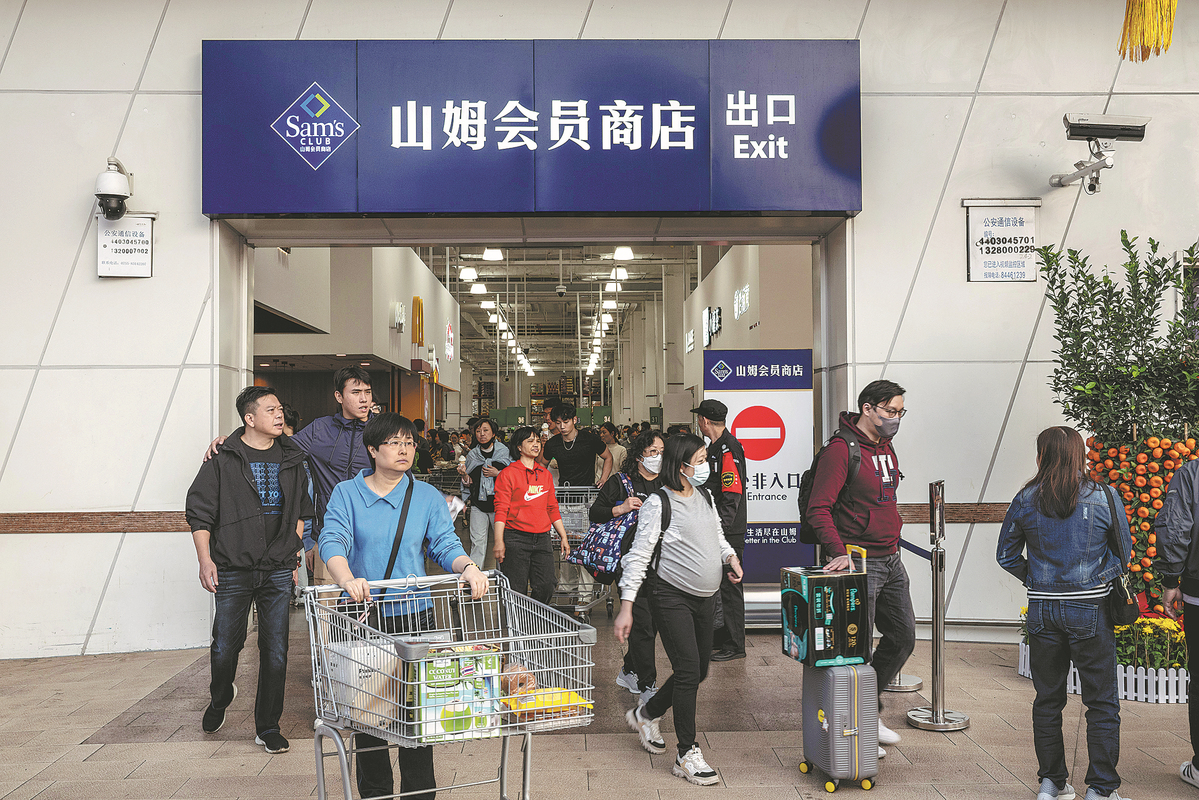HK shoppers flocking north for bargains, fun and food
Easier access, improved transportation driving post-pandemic wave of visitors


Value for money
The ongoing wave reflects how integration between Hong Kong and Shenzhen is gathering pace, boosted by policy support and improved infrastructure. The appreciation of the Hong Kong dollar against the renminbi over the past year has also boosted Hong Kong residents' spending power on the mainland.
"Many Hong Kong residents hadn't been to the Chinese mainland for years due to the pandemic. So now they are flocking to Shenzhen for 'revenge shopping' to make up for the time lost," said Chong Tai-leung, associate professor at the Chinese University of Hong Kong's Department of Economics.
"It's no longer confined to just one or two people going to Shenzhen each weekend. Whole families are going there together. This structural shift will continue to gain momentum," he said.
Travel has become easy and convenient as the cross-border transportation network has improved greatly in recent years, with the "one-hour living circle" taking shape in the Guangdong-Hong Kong-Macao Greater Bay Area.
The Northbound Travel for Hong Kong Vehicles program, which came into effect last July, also enables eligible Hong Kong private cars to travel to Guangdong via the Hong Kong-Zhuhai-Macao Bridge. Official statistics show that as of March 9, more than 500,000 cross-border trips had been made. The figure for February alone reached over 100,000.
Businesses in Shenzhen are adjusting their strategies and stepping up marketing campaigns to seize the opportunities arising from the influx of Hong Kong residents.
"The most significant trend is that the proportion of catering outlets — especially those in the Chinese specialty cuisine and new-style tea drinks subsectors — in a mall's tenant mix, has increased significantly to meet the growing dining demand from Hong Kong consumers," said Zhang Xiaoduan, deputy dean of Cushman & Wakefield Research Institute.
"This is particularly noticeable in midrange malls near the checkpoints and transit hubs, such as Link CentralWalk and Wongtee Plaza (Futian district)."
The expansion of direct warehouse shopping and grocery chains like Sam's Club, Hema and Costco in Shenzhen has also accelerated, partly to better satisfy the "buy-in-bulk "needs of Hong Kong consumers who travel north to shop every one or two weeks, Zhang said.
Chen Wenhui, retail head of advisory and transaction services at CBRE Southern China, said Hong Kong consumers mainly get information on the Shenzhen retail market from social media platforms like Xiaohongshu.
"The consumption boom has enabled Shenzhen merchants to understand the consumption characteristics of Hong Kong residents, which will boost the confidence of mainland brands in opening up new stores in the SAR," said Chen.
The closer interaction between the two cities, both online and offline, also allows Hong Kong consumers to gain a deeper understanding of the mainland's economic and cultural environment, helping Hong Kong better integrate into the country's overall development, he added.


















